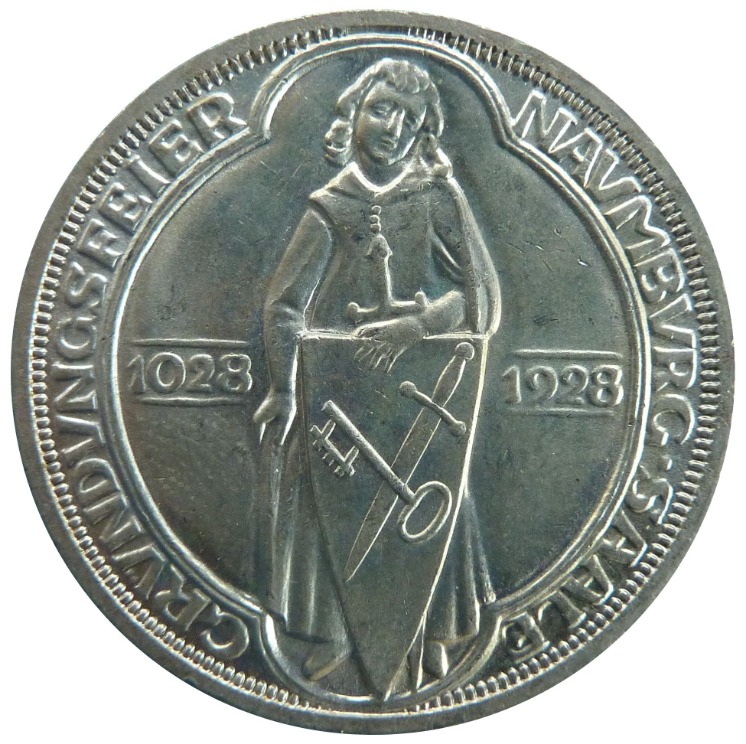Overview of Namibia’s Currency System
Namibia’s currency system is centered around the Namibian dollar, which is the official currency used across the country. Introduced in 1993, the Namibian dollar complements the South African rand, with both currencies circulating interchangeably at par value. This currency system reflects Namibia’s economic ties with South Africa and supports smooth trade and financial transactions within the region. The currency includes various denominations of coins and banknotes designed to meet the diverse needs of consumers and facilitate everyday commerce.
Historical Background of Namibia’s Currency
Namibia’s currency system is centered around the Namibian dollar, which is the official currency of the country. The Namibian dollar (NAD) was introduced in 1993, replacing the South African rand at par value, to establish a distinct national monetary identity following independence.
Historically, Namibia was a German colony and later a South African mandate, which influenced its monetary system. Prior to independence, the South African rand served as the de facto currency in Namibia. The introduction of the Namibian dollar marked a significant step towards economic independence, and its peg at par to the South African rand ensures monetary stability and facilitates trade between the two nations. Over time, the Namibian dollar has been managed by the Bank of Namibia, which is responsible for issuing currency and maintaining financial stability in the country.
Evolution from Colonial Currencies to the Namibian Dollar
Namibia’s currency system has experienced a significant evolution, reflecting its historical transitions and economic development. Initially, during the colonial period, the region used various currencies including the South African Pound, the South West African Pound, and the South African rand, depending on the controlling authority and geopolitical influences. After gaining independence from South Africa in 1990, Namibia established its own monetary identity to foster economic independence and stability. This transition culminated in the introduction of the Namibian dollar in 1993, which replaced the South African rand at par initially, with the aim of building a distinct national currency. The Central Bank of Namibia is responsible for issuing and regulating the Namibian dollar, ensuring monetary stability and supporting economic growth. Over time, the Namibian dollar has become a symbol of national sovereignty, and it continues to play a crucial role in Namibia’s financial system, facilitating trade, investment, and everyday transactions throughout the country.
Transition to the Current Namibian Dollar
Namibia’s currency system has evolved over time, reflecting its colonial history and subsequent independence. Initially, Namibia used foreign currencies such as the South African pound and later the South African rand due to its colonial ties. The country officially adopted its own currency, which marked a significant step in establishing economic independence. The transition to the current Namibian dollar was a key milestone in solidifying its monetary sovereignty.
The Namibian dollar (NAD) was introduced on February 13, 1993, replacing the South African rand at a one-to-one exchange rate. This change aimed to create a distinct national identity and foster economic stability. The Namibian dollar is pegged equally to the South African rand, which is also accepted in Namibia, facilitating trade and currency exchange. The currency features national symbols and influential figures from Namibia’s history, embodying the country’s cultural heritage.
- In 1990, Namibia gained independence from South Africa, paving the way for monetary sovereignty.
- To establish a national currency, the Namibian government created the Namibian dollar, which was introduced in 1993.
- The Namibian dollar is pegged at par with the South African rand, which remains in circulation and widely accepted.
- This currency transition marked the nation’s efforts toward economic independence and modernization.
Namibian Dollar (NAD)
The Namibian Dollar (NAD) is the official currency of Namibia, a country located in southwestern Africa. Introduced in 1993, it replaced the South African Rand at par and is used widely across the nation for everyday transactions. The Namibian Dollar features symbols of national heritage and economic stability, serving as a key element of Namibia’s financial system. It is pegged to the South African Rand, allowing for smooth currency exchange within the region.
Issuance and Regulation by the Bank of Namibia
The Namibian Dollar (NAD) is the official currency of Namibia, serving as a key component of the country’s monetary system. It was introduced in 1993, replacing the South African rand at par, and is used for all domestic transactions within Namibia. The currency is symbolized by the sign “$” or “N$” to distinguish it from other dollar-denominated currencies.
The issuance of the Namibian Dollar is managed by the Bank of Namibia, which is the country’s central bank responsible for maintaining monetary stability. The bank issues banknotes and coins, overseeing their circulation and ensuring they meet security and quality standards. The Bank of Namibia also plays a vital role in regulating the money supply and implementing monetary policy to promote sustainable economic growth.
As the regulatory authority, the Bank of Namibia endeavors to maintain the stability and integrity of the NAD, preventing counterfeiting and fraud. It also manages currency reserves and collaborates with international financial institutions to support Namibia’s monetary and financial policies. Overall, the Bank of Namibia’s role in issuing and regulating the Namibian Dollar is essential for fostering confidence in the currency and ensuring the smooth functioning of the country’s financial system.
Design and Features of the Currency Notes and Coins
The Namibian Dollar (NAD) serves as the official currency of Namibia, symbolizing the country’s economic stability and heritage. The currency includes a variety of notes and coins, each thoughtfully designed to reflect Namibia’s rich culture, history, and natural resources.
Namibian banknotes are characterized by vibrant colors and detailed illustrations that depict local wildlife, iconic landmarks, and cultural symbols. The notes feature security elements such as watermarks, security threads, and holograms to prevent counterfeiting. Each denomination has a distinct size and color scheme for easy identification, with denominations ranging from low-value coins to high-value banknotes.
Coins in Namibia are made from various metals, including copper, nickel, and brass, and are used for everyday transactions. They typically feature national symbols, the denomination value, and sometimes images of native flora and fauna. The coins come in different denominations to facilitate convenient and efficient commerce across the country.
Overall, the design and features of Namibian currency notes and coins embody Namibia’s cultural identity, natural beauty, and commitment to security, making it a distinctive and practical currency for the nation.
Denominations and Their Uses
The Namibian Dollar (NAD) is the official currency of Namibia and is widely used in everyday transactions throughout the country. It is a symbol of Namibia’s independence and economic stability. The currency features various denominations that serve different monetary functions, making daily commerce efficient and straightforward.
- Coins: The Namibian Dollar coins come in denominations of 1, 5, 10, 20, and Fifty cents, and 1 Namibian dollar. Coins are generally used for small transactions, local purchases, and everyday expenses such as transportation fares, snacks, and small retail items.
- Banknotes: The banknotes are available in denominations of 5, 10, 20, 50, 100, and 200 NAD. These are used for larger transactions, including shopping, paying bills, and other significant expenses.
The different denominations of the Namibian Dollar facilitate wallet organization, enabling users to carry the appropriate amount for specific purchases. Coins are practical for small amounts, while banknotes cover the needs of larger purchases, making the currency adaptable for all segments of the economy.
Currency Exchange and International Trade
Currency exchange plays a vital role in facilitating international trade by enabling countries to transact efficiently across borders. In Namibia, where the economy increasingly engages with global markets, understanding the dynamics of currency exchange is essential for businesses and travelers alike. This article explores the significance of currency in Namibia’s international trade and how it influences economic growth and global partnerships.

Exchange Rate Policies
Currency exchange and international trade are vital components of Namibia’s economic landscape, influencing how the nation engages with global markets. Namibia primarily uses the Namibian dollar (NAD), which is pegged to the South African rand (ZAR), facilitating ease of trade and currency stability within the region. Exchange rate policies play a crucial role in maintaining this peg, helping to control inflation and promote economic growth.
Namibia’s exchange rate policy generally emphasizes stability and predictability, which encourages foreign investment and smooths international transactions. By maintaining a fixed exchange rate with the South African rand, Namibia benefits from lower currency risk, although it also limits monetary policy flexibility. Fluctuations in the Namibian dollar are thus closely tied to regional economic conditions and South Africa’s monetary policy decisions.
International trade in Namibia heavily relies on the stability of its currency, especially for exports such as mining products, fish, and beef. A stable exchange rate ensures that Namibia remains competitive in global markets while protecting domestic consumers from volatile currency fluctuations. The country’s central bank monitors exchange rate movements carefully and can intervene through foreign currency reserves to uphold the peg when necessary.
Overall, Namibia’s approach to exchange rate policies and currency stability significantly impacts its international trade prospects. By maintaining a stable currency environment, Namibia aims to foster sustainable economic growth, attract foreign investment, and strengthen its position in regional and global markets.
Participation in the Common Monetary Area
Currency exchange and international trade are critical components of Namibia’s economic stability and growth. The country’s currency, the Namibian dollar, plays a pivotal role in facilitating trade transactions both domestically and with international partners. Maintaining a stable currency ensures confidence among traders and investors, enabling Namibia to engage effectively in the global market. Exchange rates influence the competitiveness of Namibian exports and the cost of imports, impacting the overall economic balance.
Participation in the Common Monetary Area (CMA), which includes Namibia, South Africa, Lesotho, and Eswatini, provides strategic advantages by promoting monetary stability and facilitating trade. Under the CMA, the Namibian dollar is pegged to the South African rand at par, allowing for seamless currency exchange and financial integration. This arrangement helps reduce currency risk for Namibian traders and investors, encouraging cross-border commerce and investment within the monetary zone. The CMA’s framework supports Namibia’s efforts to stabilize its currency, foster economic cooperation, and enhance its participation in regional and international trade networks.
Impact on Export and Import Dynamics
Currency exchange plays a vital role in shaping Namibia’s international trade, significantly influencing its export and import dynamics. The value of the Namibian dollar relative to other major currencies determines the competitiveness of Namibian goods abroad and the cost of imported products within the country. When the Namibian dollar weakens against foreign currencies, Namibian exports become cheaper and more attractive to international buyers, potentially boosting export volumes. Conversely, a stronger local currency can make imports more affordable, encouraging increased import activity but potentially harming local producers due to increased competition. Fluctuations in currency exchange rates can introduce volatility into trade planning and pricing strategies, compelling businesses to hedge against currency risks. Overall, maintaining a stable currency value supports Namibia’s economic stability by promoting consistent trade flows and fostering confidence among trade partners and investors.
Security Features and Counterfeit Prevention
Namibia’s currency incorporates advanced security features and counterfeit prevention measures to ensure the integrity and trustworthiness of its banknotes. These innovations are designed to protect the currency from forgery, safeguarding the economy and maintaining public confidence. By integrating sophisticated techniques, Namibia aims to stay ahead of counterfeiters and provide secure, reliable currency for everyday transactions.
Advanced Security Features in Banknotes
The Bank of Namibia employs a variety of advanced security features in its banknotes to prevent counterfeiting and ensure authenticity. These features include complex holograms, transparent windows, and intricate intaglio printing that are difficult to replicate. Micro-lending and micro-lettering, which are only visible under magnification, add an additional layer of security. Color-shifting inks are used on certain denominations, changing color when the note is tilted, making counterfeit attempts more evident. Additionally, watermark portraits of notable Namibian figures are integrated into the paper, visible when held against the light. These advanced security measures help protect the integrity of Namibia’s currency and maintain public confidence in the monetary system.
Measures Against Counterfeiting
Namibia’s currency incorporates advanced security features and counterfeit prevention measures to ensure its authenticity and integrity. These features include watermarks, security threads, holographic elements, and color-shifting inks that are difficult to replicate. Additionally, textured printing and microtext are used to provide tactile and visual verification, making counterfeiting more challenging. The banknotes are also equipped with ultraviolet (UV) features visible only under UV light, further enhancing security. Anti-copying and anti-scanning technologies are integrated to prevent digital reproduction of the notes. The combination of these sophisticated measures helps protect Namibia’s currency from counterfeiting and maintains public confidence in the monetary system.
Technological Innovations in Currency Security
Namibia employs a range of advanced security features and technological innovations to safeguard its currency against counterfeiting. These measures are essential in maintaining the integrity of the Namibian dollar and ensuring trust among users.
- Watermarks: Incorporating complex watermarks that are visible when held up to light, providing an immediate verification method.
- Security Threads: Embedding metallic or fluorescent threads within banknotes, which often have microtext or color-shifting properties.
- Color-Shifting Ink: Utilizing special inks that change color when the note is tilted, making counterfeiting more difficult.
- Microprinting: Adding tiny text or symbols that are difficult to reproduce without specialized equipment.
- Holograms and Foil Elements: Integrating holographic images or foil patches that display dynamic visual effects under different viewing angles.
- UV Features: Applying ultraviolet-reactive markings that are only visible under UV light, aiding quick verification.
- Magnetic Ink: Using magnetic pigments in specific areas of the currency for banknote authentication via specialized equipment.
- Biometric Security Features: Incorporating biometric data, such as fingerprint or iris patterns, in future currency designs.
- Advanced Printing Techniques: Employing intaglio and offset printing with intricate designs that are challenging to replicate.
- Digital Authentication Tools: Promoting the use of mobile apps and digital verification technologies for quick currency validation.
Economic Impact of the Currency
The currency of Namibia plays a vital role in shaping the country’s economic stability and growth. As a cornerstone of the nation’s financial system, the Namibian dollar influences trade, investment, and consumer confidence both domestically and internationally. Understanding the economic impact of this currency helps to assess Namibia’s economic resilience and its integration into the global economy.
Stability and Inflation Control
The stability of Namibia’s currency plays a crucial role in maintaining the country’s economic health, influencing everything from inflation rates to investor confidence. A stable currency helps reduce uncertainty in the market, encouraging both domestic spending and foreign investment. Proper inflation control ensures that prices remain predictable, preserving the purchasing power of consumers and maintaining the cost competitiveness of Namibian exports. When inflation is kept in check, it supports sustainable growth by fostering a conducive environment for long-term economic planning and development. Ultimately, a secure and stable currency can lead to overall macroeconomic stability, fostering economic growth and improving the living standards of Namibia’s population.
Influence on Domestic Investment
The currency of Namibia, the Namibian dollar, plays a significant role in shaping the country’s economic landscape, particularly influencing domestic investment. Stability in the currency fosters investor confidence, encouraging both local and foreign investors to allocate resources toward various sectors such as agriculture, manufacturing, and services. A strong and stable currency reduces inflationary pressures and mitigates exchange rate risks, making long-term investment projects more attractive. Additionally, the Namibian dollar’s peg to the South African rand integrates Namibia into a regional economic framework, promoting cross-border trade and investments. Conversely, fluctuations or instability in the currency can deter investment by increasing costs and uncertainty, thereby impacting economic growth. Overall, the currency’s strength and stability are crucial for creating a conducive environment for sustainable domestic investment and economic development in Namibia.
Role in Economic Growth and Development
The currency of Namibia, the Namibian dollar, plays a significant role in shaping the country’s economic growth and development. It provides a stable medium of exchange, which facilitates trade both domestically and internationally, thereby boosting economic activity. The stability of the currency helps attract foreign investment, as investors gain confidence in the country’s financial system. Additionally, a strong currency supports price stability, reducing inflation and fostering a conducive environment for economic planning and development. The Namibian dollar also allows for efficient government and private sector transactions, promoting economic efficiency and competitiveness. Overall, the currency is a vital component in Namibia’s efforts to achieve sustainable economic growth and development, fostering an environment conducive to prosperity for its citizens.
Future Developments and Challenges
The future of currency in Namibia presents both exciting developments and notable challenges as the nation seeks to modernize its financial landscape. With advancements in digital technology and increasing global economic integration, Namibia has opportunities to enhance its monetary systems, improve financial inclusion, and adapt to emerging trends. However, these prospects also come with complexities related to security, regulation, and technological infrastructure that must be carefully addressed to ensure a stable and resilient currency future for Namibia.
Plans for Currency Modernization
Future developments in Namibia’s currency modernization focus on enhancing the efficiency, security, and accessibility of the national currency to support economic growth and financial inclusion. Advances in digital currency technology and innovative security features aim to reduce counterfeiting and facilitate smoother transactions across various sectors.
One key challenge is ensuring widespread adoption of new currency formats, particularly among rural populations and small businesses. Education and infrastructure development are essential to overcome these barriers and promote trust in modernized currency systems.
Plans include implementing a digital version of the Namibian dollar, which would streamline cross-border transactions and reduce costs associated with physical cash handling. Additionally, upgrading security features on banknotes and coins, such as embedded holograms and biometric elements, will bolster confidence and prevent fraudulent activities.
The Central Bank of Namibia is also exploring partnerships with fintech firms to develop innovative payment solutions, fostering a more inclusive financial ecosystem. Ultimately, strategic planning, technological investment, and public awareness campaigns are vital for successfully modernizing the country’s currency and overcoming future challenges.
Challenges Facing the Currency System
The future of Namibia’s currency system faces a range of developments and challenges that could shape its economic stability and growth. As Namibia continues to integrate more closely with global markets, there is potential for digital currencies and innovations in financial technology to transform how transactions are conducted within the country. However, these advancements also bring significant hurdles such as maintaining cybersecurity, ensuring financial inclusion, and managing the transition from traditional to digital currencies. Additionally, Namibia must address historic issues related to currency stability, inflation control, and supporting a resilient banking infrastructure to accommodate rapid technological changes. Balancing modernization with economic stability will be key as Namibia navigates these upcoming developments and potential challenges in its currency system.
Potential for Digital Currency Adoption
The future of currency in Namibia holds significant potential, especially with the rise of digital currency adoption worldwide. As technology advances and financial inclusion becomes a priority, Namibia may explore integrating digital currencies into its financial system to enhance efficiency and accessibility.
However, several challenges must be addressed to realize this potential. These include developing a robust digital infrastructure, ensuring security and privacy, and establishing regulatory frameworks to prevent fraud and maintain monetary stability. Additionally, educating the population about digital currency usage is essential for widespread adoption.
- Technological Infrastructure Development: Building reliable internet connectivity and digital platforms across Namibia to support digital currency transactions.
- Regulatory and Legal Frameworks: Creating policies to regulate digital currencies, prevent illegal activities, and protect consumers.
- Financial Inclusion: Ensuring that marginalized and rural populations can access and benefit from digital currency services.
- Security and Privacy Concerns: Implementing advanced security measures to prevent cyber threats and protect users’ data.
- Public Awareness and Education: Providing training and resources to increase understanding and trust in digital currencies.
- Collaborations and Partnerships: Working with international organizations and fintech companies to develop tailored digital currency solutions for Namibia.
Overall, Namibia has the opportunity to position itself as a forward-thinking nation by integrating digital currencies into its economy, but careful planning and addressing key challenges will be crucial for successful adoption.





0 Comments